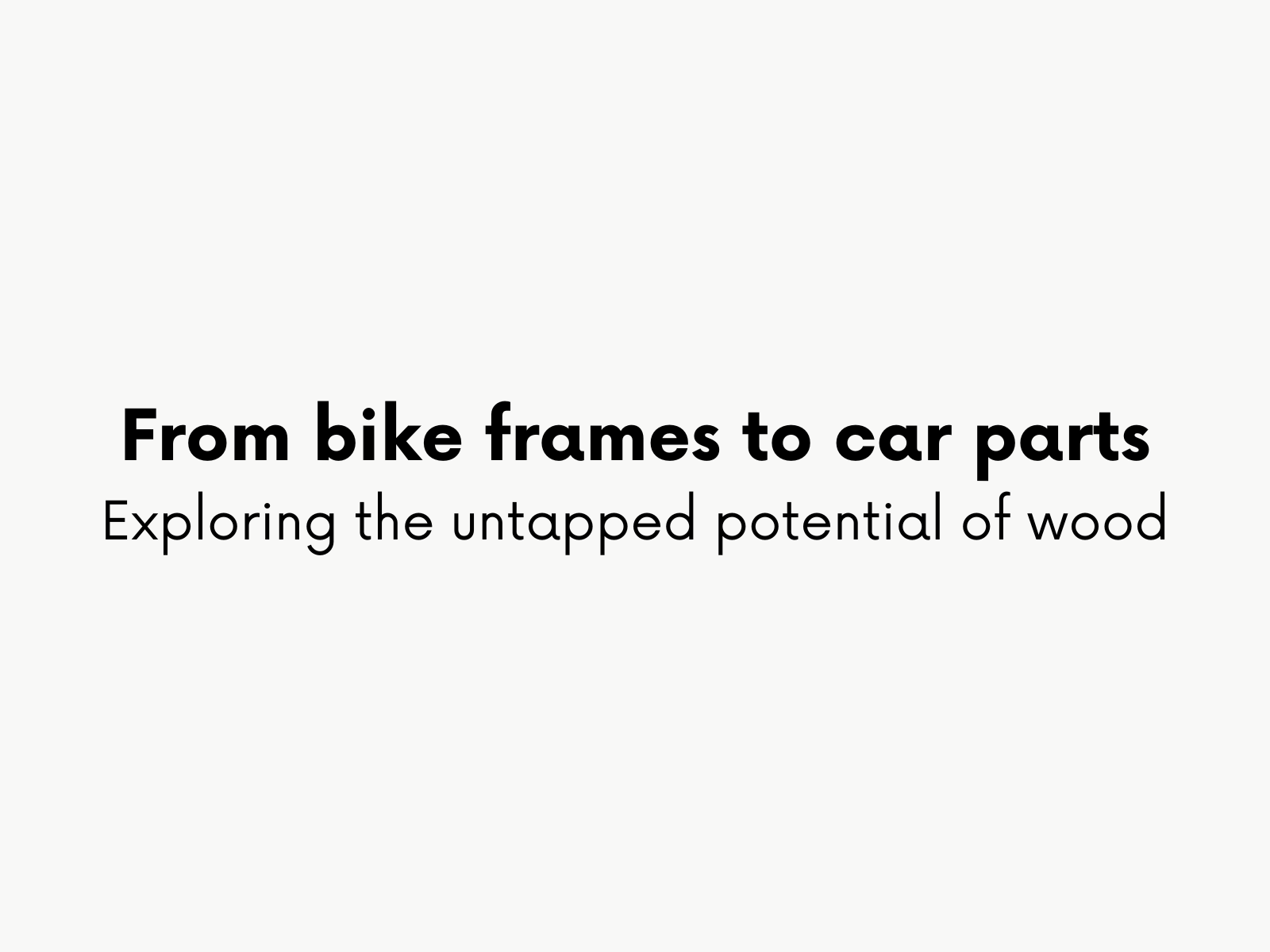
We recently spoke with Maximilian “Max” Pramreiter, a senior scientist with Prof. Johannes Konnerth at BOKU University and host of the WoodCAST podcast. Max has dedicated his career to pushing the boundaries of what wood can achieve in high-performance applications.

Jens Isbak
From bike frames to car parts: Exploring the untapped potential of wood
We recently spoke with Maximilian “Max” Pramreiter, a senior scientist with Prof. Johannes Konnerth at BOKU University and host of the WoodCAST podcast. Max has dedicated his career to pushing the boundaries of what wood can achieve in high-performance applications.
A childhood fascination grows into scientific pursuit
Max's journey into wood research began at the age of 14 when a wooden bike frame caught his eye at a school fair in Austria.
"The wooden bike frame drew my attention immediately," Max recalls. "It just looked nice, which is interesting when you're 14 years old and not so much into the details of production processes or strength-to-weight ratios."
This early fascination led him to the Higher Technical College in Salzburg, one of only two schools in Austria focusing on wood technology. After five years of study, Max continued to BOKU University, where research gradually overtook his original plans to enter the industry.
"There were moments when I considered going into industry," he explains. "But each time, a compelling research question drew me back, leading me to stay in academia."
Making wood predictable for high-performance applications
Max's PhD research has focused on making wood a viable material for industries that demand precision and consistency – particularly automotive manufacturing. Unlike traditional wood applications, where trial and error is common, modern vehicle development relies heavily on computer simulations to optimise materials before physical testing begins.
"The automotive industry depends on predictive modelling to design safer, lighter, and more efficient vehicles," Max explains. "For wood to be considered, we had to make its properties as reliable and consistent as those of metals and composites."
One of his standout projects involved helping develop a wooden side impact beam for car doors – a crucial component designed to absorb energy during collisions.
"It's something you hope you never need, but in the event of a crash, you're glad it's there," Max explains. "The beam must withstand the initial impact while deforming in a controlled manner to absorb energy."
The results were striking: under the leadership of Ulrich Müller, Max and his colleagues developed a wooden impact beam that absorbed the same amount of energy as conventional materials but was about 30% lighter. Since vehicle weight directly influences fuel consumption and efficiency, this represents a significant advancement in sustainable automotive design.
Overcoming technical challenges
The main hurdles in adapting wood for high-performance use lay in its natural variability and structural complexity. Max highlighted three key challenges:
- Natural variability: No two pieces of wood are identical, making consistency a challenge.
- Directional properties (anisotropy): Wood behaves differently along different grain directions, affecting its strength and deformation patterns.
- Complex failure mechanisms: Wood fractures in intricate ways that are harder to model.
To overcome these issues, researchers at the Technical University of Graz developed advanced modelling techniques to predict how wood behaves under stress and during failure. These breakthroughs have been instrumental in making wood a feasible option for industries requiring precision.
Innovative production approaches
A key element in making wood more suitable for these industrial applications has been the use of veneers – thin sheets of wood, typically less than 7mm thick. By layering these veneers in different orientations and bonding them with advanced adhesives, researchers can fine-tune wood's properties to meet specific performance needs.
This approach provides two major advantages: the ability to arrange veneers at precise angles to enhance strength and flexibility, and a more homogeneous material structure, reducing the impact of natural characterisitics like knots.
Climate change and raw material challenges
Despite these technological advances, the availability of raw materials is an increasing concern. Climate change is placing increasing pressure on traditional forestry resources, particularly spruce – the dominant commercial tree species in Central Europe.
"Spruce has an excellent strength-to-weight ratio with straight stems and small, well-integrated branches, making it ideal for harvesting, processing, and applications. Especially construction materials like CLT," Max explains. "But projections indicate that by the end of this century, we may have only one-third of today's spruce volume available in Germany."
Alternative hardwood species, such as oak and beech, present new challenges. Their higher density makes them harder to process and less efficient in some applications.
The future of wood research
Faced with these challenges, researchers are exploring new ways to maximise the efficiency of resources. Max sees two key areas of innovation:
- Utilising the entire tree: Rather than focusing solely on the stem, future forestry models may incorporate branches and other biomass, which currently go underutilised.
- Combining multiple wood species and materials: Hybrid approaches that blend different wood types could provide new solutions to performance limitations.
"Spruce isn't disappearing," Max reassures. "It will still be there, but in smaller quantities. We need to think beyond traditional processing methods and explore new material combinations to optimise efficiency."
A material with untapped potential
From a wooden bike frame that captured a teenager's imagination to pioneering crash-resistant car components, Max's journey illustrates how wood can evolve beyond traditional applications. His research is a testament to the potential of this ancient material in shaping the future of sustainable engineering.
Want to hear the full conversation? Tune in to our podcast here.

.png)

